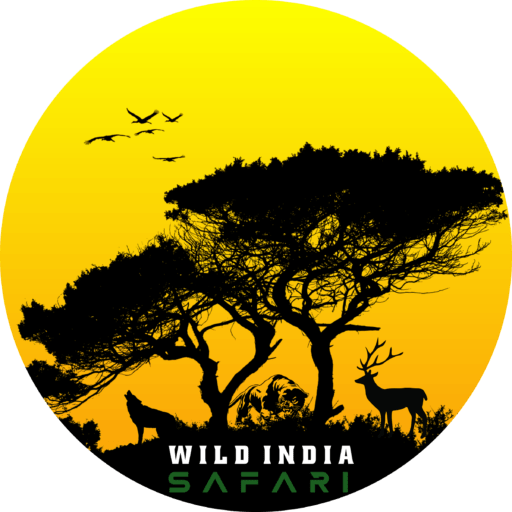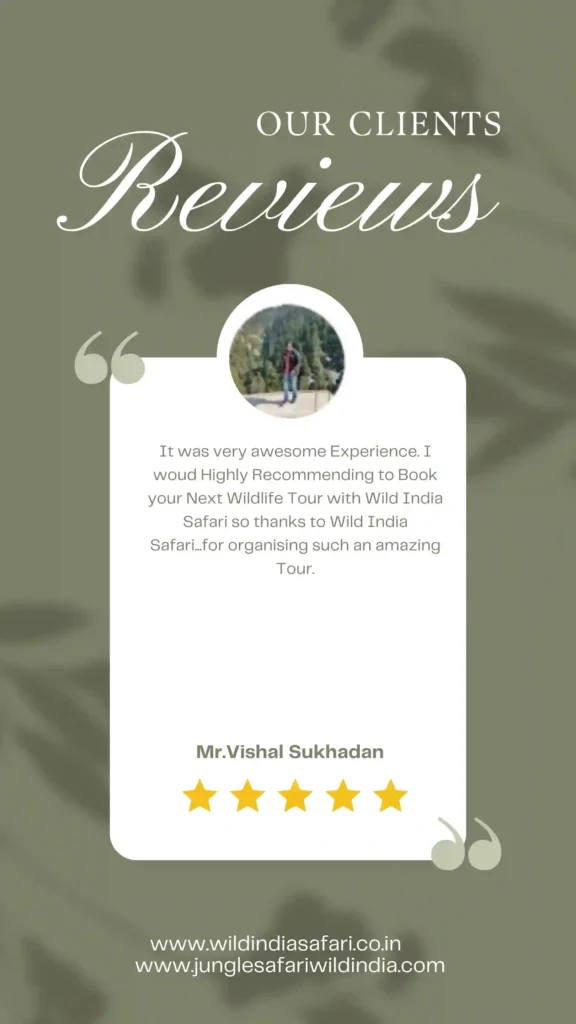
SATPURA NATIONAL PARK
INTRODUCTION
Nestled in the heart of Madhya Pradesh, Satpura National Park is a pristine wilderness that offers a unique blend of natural beauty, rich biodiversity, and historical significance. Established in 1981, this park spans an area of 524 square kilometers and forms part of the larger Satpura Tiger Reserve, which includes the adjoining Bori and Pachmarhi wildlife sanctuaries.
HISTORY OF SATPURA NATIONAL PARK
The name “Satpura” is derived from the Sanskrit words “sapta” (seven) and “pura” (mountains), referring to the seven hills that form the Satpura range1. The park was first explored by Captain James Forsyth of the Bengal Lancers in 1862 while he was searching for the Indian freedom fighter Tantya Tope1. It was one of the first areas in India to be declared a reserved forest due to its ecological and commercial importance.
Geography and Terrian
The park is characterized by its rugged terrain, which includes sandstone peaks, narrow gorges, ravines, and dense forests. The altitude ranges from 300 to 1,352 meters, with Dhoopgarh peak being the highest point at 1,350 meters. This diverse topography creates a variety of habitats that support a wide range of flora and fauna.
Flora of Satpura National Park
Diverse Plant Species
The flora of Satpura National Park is as varied as its terrain. You can find an array of plant species ranging from towering teak and sal trees to delicate wildflowers. The park’s diverse ecosystems support an incredible range of plant life.
Tropical Moist Deciduous Forests
These forests are characterized by their lush, green foliage and are found in the park’s wetter areas. Here, you’ll find trees like sal, teak, and bamboo, which provide a dense canopy that shelters many animal species.
Dry Deciduous Forests
In contrast, the dry deciduous forests are found in the park’s drier regions. These forests are less dense but equally rich in biodiversity. Trees like tendu, mahua, and palash dominate this landscape, creating a unique habitat for various wildlife.
fauna in SATPURA National Park
The park boasts a rich diversity of wildlife. It is a haven for several endangered species
Mammals
Satpura is home to a wide variety of mammals. The park is famous for its population of tigers, leopards, and Indian bison. Additionally, you can spot sloth bears, wild boars, and numerous deer species, including sambar and chital.
Birds
Bird watchers will find Satpura a true paradise. The park boasts over 300 species of birds, including the Malabar pied hornbill, crested serpent eagle, and the vibrant Indian pitta. Whether you’re an expert birder or a casual observer, the avian life here
Reptiles and Amphibians
The park also hosts a variety of reptiles and amphibians, including crocodiles, snakes, and several species of frogs. These creatures play a vital role in the park’s ecosystem, contributing to its overall health and stability.
TOURISM ACTIVITIES
The diverse fauna of Panna National Park is one of its biggest attractions, drawing wildlife enthusiasts and photographers from all over the world.
Mammals:
The park is home to a variety of mammals, including tigers, leopards, sloth bears, Indian wolves, and spotted deer. The successful tiger reintroduction program has made Panna a significant spot for tiger sightings.
Birds:
Birdwatchers will find paradise in Panna, which boasts over 200 species of birds. Notable species include the Indian vulture, red-headed vulture, and the critically endangered gharial.
Reptiles:
Reptiles like the Indian python and various species of lizards and amphibians, including frogs and toads, are also part of the park’s rich biodiversity.
Visitor Experience
Satpura National Park offers a range of activities for nature enthusiasts and adventure seekers. Visitors can enjoy jeep safaris, boat safaris, and walking safaris, providing unique opportunities to explore the park’s diverse landscapes and wildlife. The park’s serene environment and lesser-known status make it an ideal destination for those looking to escape the crowds and experience nature in its purest form.
Jungle Safaris
Jungle safaris are the highlight of Satpura National Park. Visitors can explore the park’s dense forests and open grasslands, spotting wildlife from the safety and comfort of a jeep.
Boat Safaris
For a different perspective, boat safaris on the Denwa River offer a serene and unique way to experience the park. These safaris provide excellent opportunities to see water birds and crocodiles.
Walking Safaris
Walking safaris are a more intimate way to explore Satpura. Accompanied by experienced guides, visitors can traverse the park’s trails, learning about the flora and fauna up close.
How to Get There
Panna National Park is accessible by air, train, and road, making it a convenient destination for travelers.
By Road
Satpura National Park is well-connected by road. Visitors can drive from nearby cities or take state-run buses that operate regularly to
By Train
Pipariya is the closest railway station, located around 55 kilometers from the park. Regular trains connect Pipariya to major cities in India.
By Flight
The nearest airport is in Bhopal, about 200 kilometers away. From there, visitors can hire a taxi or take a bus to reach the park.
Best Time to Visit
The best time to visit Satpura National Park is from October to June. Here’s a seasonal breakdown:
- October to March: The weather is pleasant, making it ideal for safaris and wildlife sightings. This period also offers lush greenery post-monsoon.
- April to June: These months are the best for spotting the Royal Bengal Tigers. The vegetation is dry, and the extreme heat draws animals to water sources, increasing the chances of sightings
DETAILED ITINERARY FOR SATPURA TOUR
Day 1: Bhopal to Satpura
Arrival at Bhopal -
Your adventure begins at 09:00 hrs at Bhopal airport, where you’ll meet our friendly representative. They’ll be your guide for this incredible journey, ensuring you feel welcomed and excited from the moment you arrive.
Journey to Satpura National Park -
Buckle up for a scenic 200 km drive to Satpura National Park. The journey takes approximately four hours, but don’t worry, the time will fly by as you soak in the beautiful landscapes of central India. Rolling hills, lush greenery, and quaint villages make this drive a visual treat.
Along the way, you’ll pass through picturesque countryside dotted with fields, rivers, and forests. Keep your camera handy—you’ll want to capture the rustic charm of rural India. The changing scenery offers a preview of the natural beauty that awaits you in Satpura.
As you approach the park, the anticipation builds. The lush greenery and sounds of wildlife signal your arrival at one of India’s hidden gems. Check-in is smooth and efficient, and soon you’ll be stepping into your cozy lodge, ready to start your adventure.
Checking into the Lodge -
The lodge is a blend of comfort and wilderness. Nestled in the heart of nature, it offers a peaceful retreat after your journey. The staff is warm and welcoming, ensuring you feel right at home.
The lodge features spacious rooms with rustic decor that complements the natural surroundings. Modern amenities like Wi-Fi and hot showers are available, ensuring you have a comfortable stay without losing touch with the wild.
Your room is a sanctuary of comfort. With plush beds, a private balcony, and stunning views of the forest, you’ll find it hard to leave. But adventure awaits, so freshen up and get ready for your first taste of Satpura’s wildlife
Afternoon Safari -
Post-lunch, it’s time for the highlight of the day—your first Jeep safari. Satpura National Park is renowned for its rich biodiversity, and this safari promises an unforgettable experience.
The park is home to a variety of wildlife, and you’re likely to spot majestic tigers, elusive leopards, and playful wild dogs. The thrill of seeing these animals in their natural habitat is unparalleled.
Evening at the Lodge -
After an exhilarating safari, unwind at the lodge. The serene environment and star-studded sky create the perfect setting for relaxation.
Dinner is a delightful affair with a variety of local and international dishes. Fresh ingredients and expert chefs ensure every meal is a culinary delight.
As the night deepens, the lodge comes alive with the sounds of the jungle. Sit by the fire, share stories with fellow travelers, or simply enjoy the tranquility.
Day 2: Morning and Afternoon Safaris
Morning Safari -
Start your day with a morning Jeep safari. The cool, crisp air and golden light of dawn create an enchanting atmosphere. Animals are most active during this time, increasing your chances of sightings.
Lunch at the Resort -
After the morning safari, you return to the lodge for a leisurely lunch. The midday heat is perfect for relaxing by the pool, reading a book, or simply taking a nap. This downtime prepares you for the afternoon’s adventures.
Afternoon Safari -
The afternoon safari offers another chance to explore Satpura’s wild heart. With your guide’s expert tracking skills, you venture deeper into the park, following fresh tracks and listening for telltale sounds. The thrill of possibly encountering a tiger or a pack of wild dogs keeps your senses sharp.
Day 3: Final Safari and Departure
Morning Jeep Safari -
On your final day, you embark on one last Jeep safari. Every moment feels precious as you savor the sights and sounds of the jungle. It’s a bittersweet experience, knowing it’s your last chance to witness the park’s splendor.
After the safari, you return to the lodge to pack up and check out. The lodge staff bids you farewell with warm smiles and well wishes for your journey ahead.
Return to Bhopal and Departure
The drive back to Bhopal is a time for reflection. You revisit the highlights of your trip and share stories with fellow travelers. Upon reaching Bhopal, you head to the airport, carrying with you unforgettable memories of Satpura.
Tour Inclusion
-
Accomodotion in Tadoba on Double Sharing Basis with all Meals
-
04 Exclusive Gypsy Safari
-
All Safari Permit Charges & Gypsy Charges Included
-
Expert Guide & Driver
-
Assistance Throughout Tour
-
All Land Transfer in Air Conditioned Innova / Crysta / Ertiga
Tour Exclusion
-
Transfer from home to home
-
Lens and camera charges.
-
Mobile Phone is Ban in Tadoba
-
Any personal orders and laundry services.
-
Alcoholic beverages and package drinking water
-
Special orders for food by the client
FAQ'S
for SATPURA Tour
You can expect to see tigers, leopards, sloth bears, Indian bison, and over 200 species of birds, among other wildlife.
Comfortable clothing, sturdy shoes, a hat, sunscreen, binoculars, and a camera are essential for a safari.
Yes, safaris are safe when conducted with experienced guides and following park regulations.
Jeep safaris are guided tours through the national park. They typically occur twice a day – in the early morning and late afternoon – when wildlife activity is highest.
Yes, the safari experience is suitable for families. The lodge and park offer activities and accommodations that cater to both adults and children, making it a great family adventure..
GUEST TESTIMONILAS
With 100% genuine reviews, you can read them here or on Google Maps.



